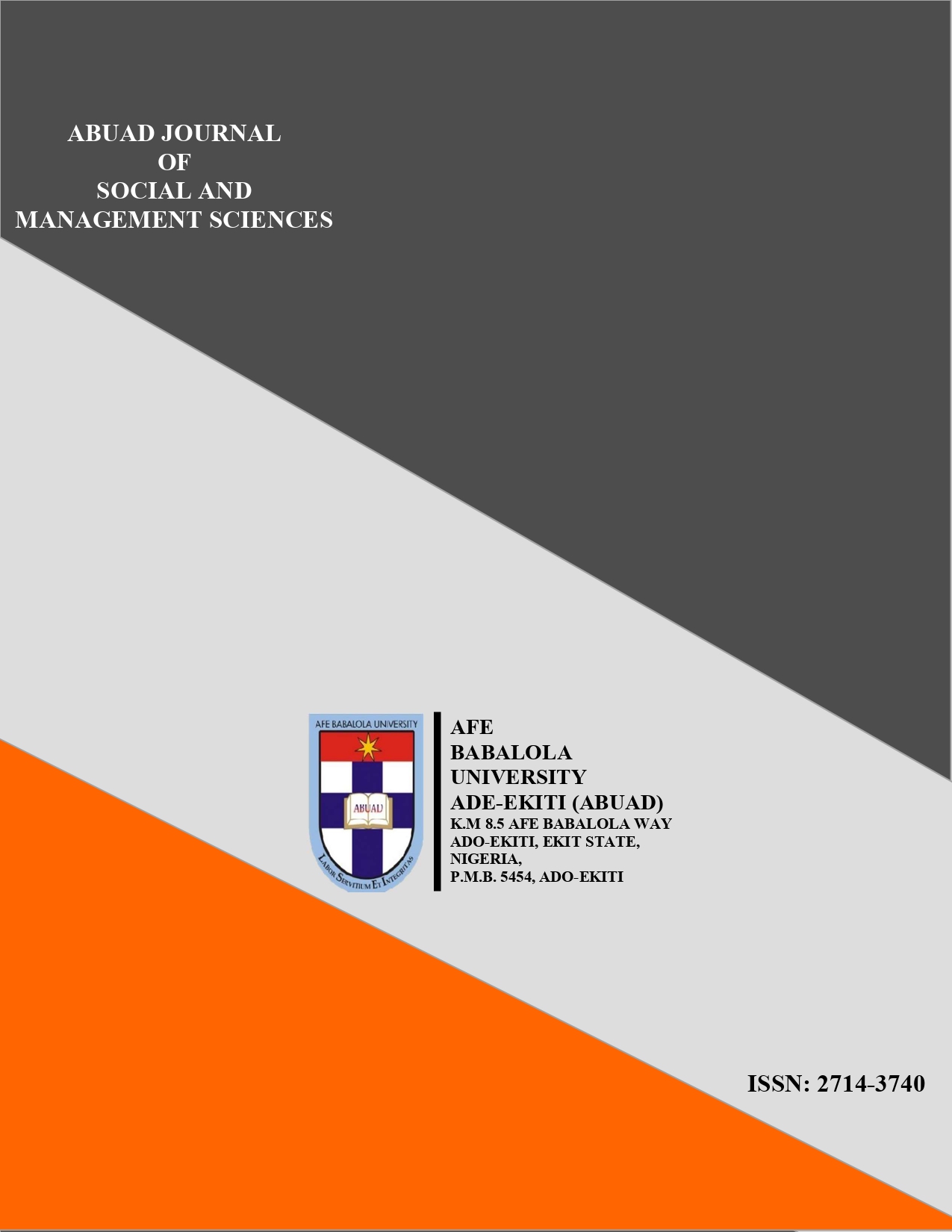Utilization of Natural Ventilation Strategies for Improving Thermal Comfort and Energy Efficiency in Low-Cost Housing in Lagos State, Nigeria
Main Article Content
Abstract
Natural ventilation plays a crucial role in enhancing thermal comfort and reducing energy consumption in low-cost housing. This study investigates the effectiveness of natural ventilation strategies in Ajegunle, Lagos State, focusing on building orientation, window configuration, and structural permeability. A quantitative research approach was adopted, utilizing a structured questionnaire administered to 150 randomly selected respondents. Data analysis, conducted using descriptive statistics and regression analysis, revealed a negative correlation (r = -0.62) between natural ventilation efficiency and reliance on mechanical cooling systems. The study found that 73% of respondents in well-ventilated homes used fans and air conditioners less frequently, whereas 81% in poorly ventilated homes depended on these appliances daily. Additionally, factors such as financial constraints (64%), landlord unwillingness (58%), and security concerns (46%) were identified as barriers to implementing effective passive cooling solutions. Despite these challenges, the study underscores the potential of natural ventilation in improving living conditions in low-cost housing. The findings offer valuable insights for architects, urban planners, and policymakers, emphasizing the need for design innovations and policy support to enhance passive cooling strategies in affordable housing developments. Future research should explore advanced passive cooling techniques and their long-term impacts on energy efficiency and occupant well-being.
Downloads
Article Details

This work is licensed under a Creative Commons Attribution-NonCommercial-ShareAlike 4.0 International License.
Authors hold the copyright of all published articles except otherwise stated.
References
Ayoariyo, A. (2020). Examining the Mechanism on Ventilation for Thermal Comfort in Residential Buildings: A Case of Government Housing Estates in Nigeria. Proceedings of The 2nd International Conference on Advanced Research in Applied Science and Engineering. https://doi.org/10.33422/2ND.RASE.2020.03.96.
Ayoariyo, A., & Atolagbe, A. (2021). Determining the Mechanism on Ventilation for Thermal Comfort in Residential Buildings: A Case of Government Housing Estates in Nigeria. New Approaches in Engineering Research Vol. 15. https://doi.org/10.9734/bpi/naer/v15/4197f.
Babalola, O., Ibem, E., Olotuah, A., Opoko, A., Adewale, B., & Fulani, O. (2019). Housing quality and its predictors in public residential estates in Lagos, Nigeria. Environment, Development and Sustainability, 22, 3973-4005. https://doi.org/10.1007/s10668-019-00367-8.
G, F., E., N., O.K, A., & D, M. (2023). Critical Factors Contributing to Poor Natural Ventilation of Residential Buildings. International Journal of Advanced Engineering and Management Research. https://doi.org/10.51505/ijaemr.2023.8306.
Khajavi, F., Farrokhzad, M., & Hosseini, S. (2021). Controlling energy consumption in residential buildings using air infiltration in humid climates. Environment, Development and Sustainability, 23, 15118 - 15144. https://doi.org/10.1007/s10668-021-01288-1.
Liu, S., Song, R., & Zhang, T. (2021). Residential building ventilation in situations with outdoor PM2.5 pollution. Building and Environment, 202, 108040. https://doi.org/10.1016/J.BUILDENV.2021.108040.
Nguyen, A., & Reiter, S. (2014). Passive designs and strategies for low-cost housing using simulation-based optimization and different thermal comfort criteria. Journal of Building Performance Simulation, 7, 68 - 81. https://doi.org/10.1080/19401493.2013.770067.
Onyenokporo, N., & Ochedi, E. (2019). Low-cost retrofit packages for residential buildings in hot-humid Lagos, Nigeria. International Journal of Building Pathology and Adaptation. https://doi.org/10.1108/IJBPA-01-2018-0010.
Park, K., Woo, D., Leigh, S., & Junghans, L. (2022). Impact of Hybrid Ventilation Strategies in Energy Savings of Buildings: In Regard to Mixed-Humid Climate Regions. Energies. https://doi.org/10.3390/en15061960.
Sarkar, A., & Bardhan, R. (2020). Optimal interior design for naturally ventilated low-income housing: a design-route for environmental quality and cooling energy saving. Advances in Building Energy Research, 14, 494 - 526. https://doi.org/10.1080/17512549.2019.1626764.
Spentzou, E., Cook, M., & Emmitt, S. (2018). Natural ventilation strategies for indoor thermal comfort in Mediterranean apartments. Building Simulation, 11, 175-191. https://doi.org/10.1007/S12273-017-0380-1.
Taleb, H. (2015). Natural ventilation as energy efficient solution for achieving low-energy houses in Dubai. Energy and Buildings, 99, 284-291. https://doi.org/10.1016/J.ENBUILD.2015.04.019.




